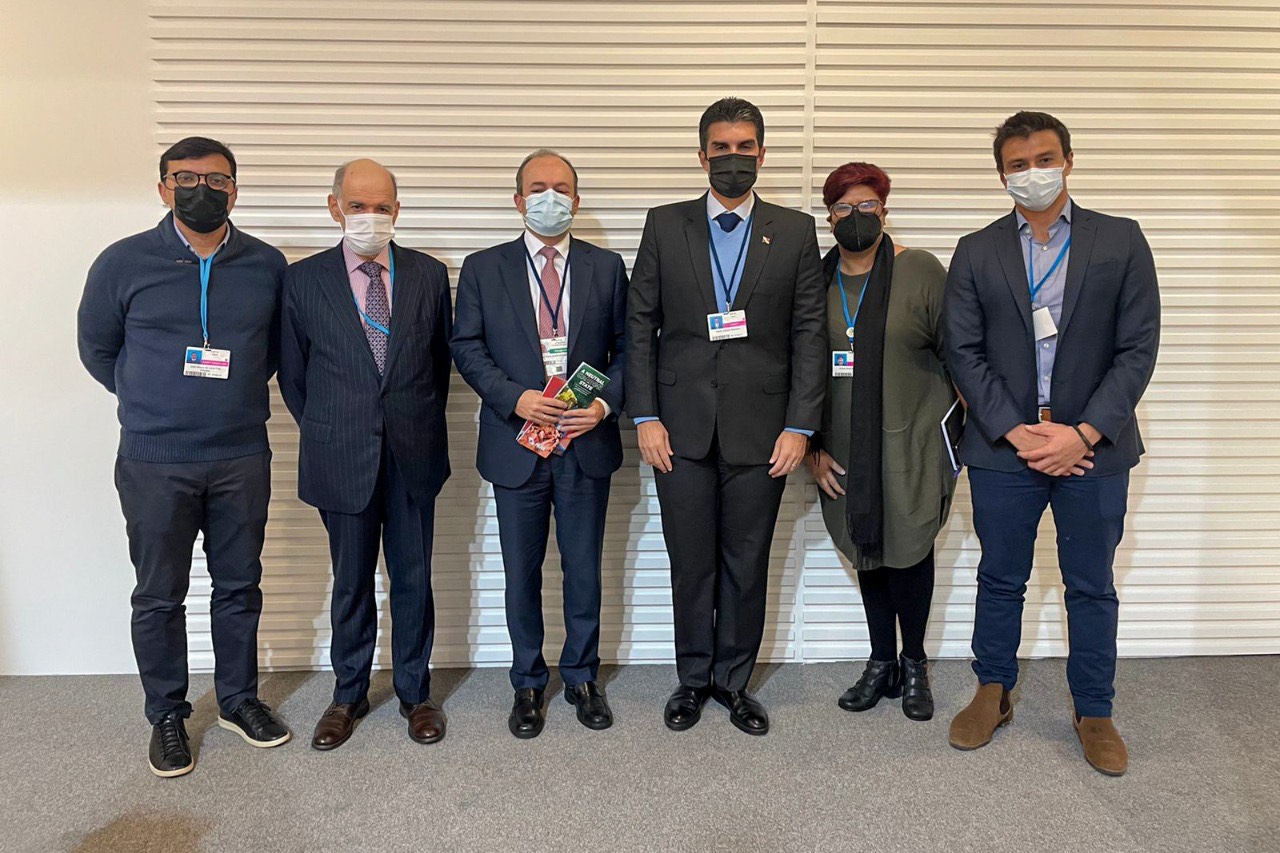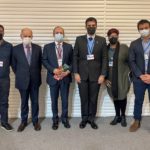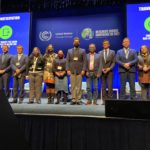Governor Helder Barbalho and his entourage presented programs, projects and actions already implemented by the state administration
An agenda focused on the green economy was presented by the Pará State Government at COP26, the 26th United Nations Climate Change Conference, held in Glasgow, Scotland. The governor of Pará, Helder Barbalho, and the Secretary of State for Environment and Sustainability, Mauro O’Almeida, presented the challenges and the economic and social diversities, seeking resources to enable initiatives and projects that enable the preservation of the Amazon Forest, specifically in Pará’s territory, and a better quality of life for their populations. Throughout the conference there were productive debates about the Amazon, where managers-maintained contact with various institutions, authorities, and companies, signing international partnerships to finance the conservation of the Amazon forest, directed towards the implementation of sustainable practices allied with socioeconomic development and citizenship to the Amazonian communities. During the negotiations there was a constant emphasis on mobilization and integration to reach net zero emissions.
State plans and programs were presented daily to scientific, business, and governmental communities, seeking technological investments in science and bioeconomy, among other strategic and normative areas, such as the implementation of the State Policy on Climate Change in Pará.
Pará arrived at COP 26 as the first Brazilian state to have a State Bioeconomy Strategy, with a creation decree signed on October 18, 2021, by Governor Helder Barbalho and Secretary Mauro O’Almeida, during the World Bioeconomy Forum. Pará is leading the construction of a State Bioeconomy Plan as a social, economic, and environmental development process.
The Amazônia Agora State Plan (PEAA) was also exposed with its four pillars of support: the State Force to Combat Deforestation, for the reduction of deforested areas; Sustainable Territories – efficiency program for productive chains, technical assistance and opening of credit; Regulariza Pará Program, for land and environmental regularization, and Climate Finance, with stimulus to the relationship between the public and the private, through the Oriental Amazon Fund (FAO) – financial platform in action in Pará, with public-private management.
As a model of climate finance in the state, BanparáBio, was presented to the international community as the contribution of financial resources for small and medium rural producers, who work with bioeconomy.
“The Brazilian Amazon is home to nearly 25 million people. While we are facing the largest tropical biome on the planet, the largest hydrographic basin in the world, we have millions of people who need to live in it, and our search is to harmonize this experience. Dialogue is needed to reconcile opportunities and transform the vocation from a merely extractive initiative, which involves the process of environmental destruction, to a sustainable concept, of preservation”, emphasized Governor Helder Barbalho, leader of the Interstate Consortium Legal Amazon, which brings together the nine governors of the Legal Amazon.
The SeloVerde Program, with traceability, seeks greater efficiency in the livestock chain; the Carbon Emission Reduction Strategy, in the scope of Race to Zero, and other presentations generated good results, such as the Memorandum of Understanding (MoU) with Emergente on behalf of the Legal Amazon Consortium.
Helder Barbalho participated in the General Assembly of the Under 2 Coalition, an initiative of subnational governments that aims to reduce greenhouse gas emissions by 2050. Pará was announced as an effective member of the coalition during the UN Climate Conference.
In another meeting of the General Assembly of the Under 2 Coalition, the holder of Semas participated in the debates on Net Zero Financing for states and Latin American regions. “We need to transform the use of natural resources into wealth and make more efficient use of them. In this way, in recent years we created the State Policy on Climate Change and implemented the State Plan Amazonia Now, which includes a development strategy axis, reduction of greenhouse gases, but also forest restoration,” reinforced Mauro O’de Almeida.
The Government of Pará announced during COP26 that it will launch a program with resources of R$ 472 million for the bioeconomy, of which R$ 400 million will be used to finance small rural producers, agribusinesses and traditional communities. Besides this, R$ 72 million will be invested in the creation of the Bioeconomy and Innovation Park of the Amazon, for investments in research and stimulus to new actions.
Pará ends COP 26 with several connections of impact between Amazonian governments and investors in climate and forest, with interaction and articulation aimed at economic and social development.
Source: Bruna Brabo – Secretary of Environment and Sustainability (SEMAS) of Pará







